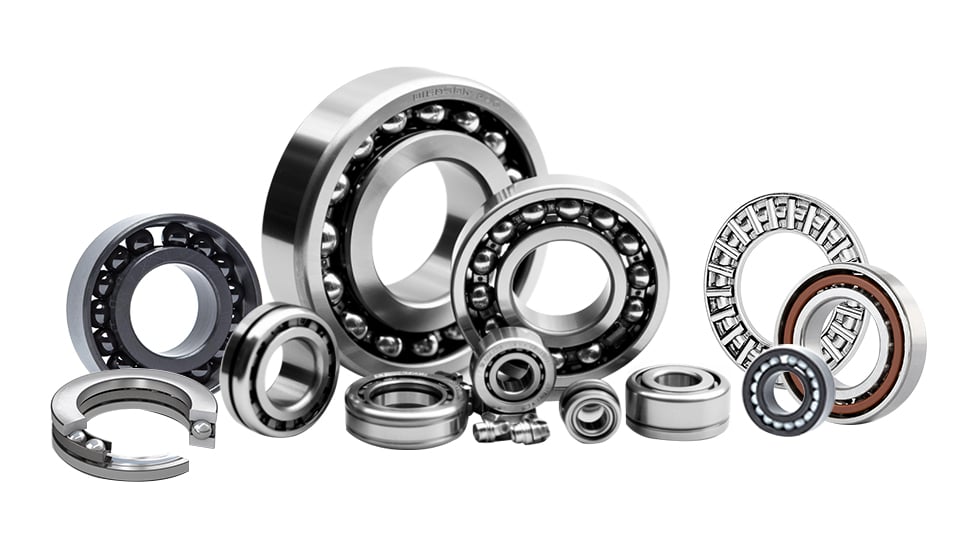Bearing Speed Limitations
Bearing speed is vital for machinery efficiency and durability. Its capacity is often measured by its operating temperature. Excessive friction heat indicates potential overreach in rotational speed, which can lead to failures like seizures. Beyond temperature, some bearings have inherent mechanical limits influencing their speed. This article delves into the importance of bearing speed, its relation to temperature, and the role of mechanical constraints.

Speed Ratings in Bearing Product Tables
Navigating the complexities of bearing capabilities often leads professionals to bearing product tables. These tables illuminate the speed boundaries bearings can safely operate within. Let’s succinctly break down the key speed ratings:
Reference Speed
- Thermal Conditions: This rating reveals the speed at which a bearing can run without overheating.
- ISO 15312 Standards: Adherence to this international standard ensures optimal bearing operation under set thermal conditions.
- Specific to Open Bearings: Reference speeds primarily cater to open bearings, emphasizing their operational limits in certain conditions.
Limiting Speed
- Mechanical Constraints: This rate highlights the mechanical threshold beyond which the bearing's integrity might be at risk.
- Cautionary, Not Prohibitive: The limiting speed serves as an advisory boundary, urging a detailed operational analysis when approached or reached.
- Critical for Sealed Bearings: For bearings with contact seals, the limiting speed often dictates their maximum operational capacity.
Bearings with Contact Seals
Bearings with contact seals predominantly rely on their limiting speed to determine their maximum bearing speed . Unlike other types of bearings, they often don't feature reference speeds in product tables. The presence of seals, while offering protection from contaminants, influences the bearing speed due to the added friction. Thus, understanding this balance is crucial for their efficient use.
ISO Standard Conditions
The ISO 15312 standard provides specific guidelines for determining the reference speed of a bearing, ensuring that engineers and users can make informed decisions about bearing speed capabilities.
Parameters Affecting ISO Reference Speed
- Heat Dissipation: The reference speed is based on a predefined reference heat dissipation, ensuring the bearing operates within thermal equilibrium.
- Load Conditions: Light load operations are essential, with radial bearings (e.g. deep groove ball bearings) having a load P = 0.05 C0P=0.05C0 and thrust bearings (e.g. thrust ball bearings) with P = 0.02 C0P=0.02C0.
- Temperature Increase: A nominal rise of 50°C (90°F) above an ambient reference of 20°C (70°F) is the benchmark.
- Lubrication Requirements: Oil lubrication is crucial, specifically mineral oil without EP additives. Radial bearings use ISO VG32, while thrust bearings opt for ISO VG68.
Applicability to Open Bearings
The ISO reference speed is strictly valid for open bearings. They should have:
- Clean conditions to ensure optimal performance.
- Adequate operating clearance, as determined by initial internal clearance selection.
- A setup featuring a horizontal shaft with a rotating inner ring and stationary outer ring.
Lack of Reference Conditions for Sealed Bearings
Sealed bearings don't have specified reference speeds in most product tables due to the specific challenges posed by seals, including increased friction and potential for heat buildup.
Grease Lubrication and Temperature Peaks
The ISO standard does not define reference conditions for sealed bearings.
This standard, originally formulated for oil lubrication, extends to grease lubrication under the specification that it employs a lithium-based grease with a mineral oil base possessing a viscosity ranging between 100 and 200 mm²/s.
Under grease lubrication, bearings may experience a peak in temperature during the initial start-up phase. This necessitates a running-in period for the bearings to achieve a steady-state operating temperature, ensuring optimal functionality and longevity.
Adjusted Reference Speed
Understanding the adjusted reference speed is key in bearing applications, providing a more tailored approach than the standardized ISO reference speed.
- Calculation: Adjust the reference speed based on specific machine operations, considering real-world conditions.
- Load and Lubricant Viscosity: These factors greatly influence bearing speed and need precise adjustments to ensure optimal operation.
- Conservative Approach: Prioritize safety and longevity by taking a cautious stance towards calculated results.
- Thermal Analysis: Beyond load and lubricant adjustments, a thermal analysis is vital for comprehending heat dissipation and ensuring peak performance.
Mechanical Speed Limit
The product tables highlight a defined limiting speed for standard bearing configurations. This speed should not be surpassed unless modifications are made to the bearing design to accommodate increased velocities. To effectively harness the bearing's limiting speed:
Lubrication
Proper lubrication is paramount. As one nears the upper speed threshold, transitioning to oil lubrication might become necessary.
Determinants of Limiting Speed
Several factors dictate the speed boundary:
- Cage Integrity: The structural stability and resilience of the cage play a significant role.
- Cage Surface Lubrication: Adequate lubrication of the cage's guiding surfaces ensures seamless operation.
- Forces at Play: The centrifugal and gyratory forces exerted on the rolling elements can influence speed limitations.
- External Factors: Elements such as specific seals and the choice of lubricant, especially for sealed bearings, can also affect the bearing's speed potential.
When considering open ball bearings, it's vital to note that their design and structure might necessitate specific considerations with regard to their limiting speed.
Operating Bearings Above Speed Limits
Operating a bearing beyond its standard speed limits demands precision and careful analysis. Before proceeding:
Thermal Analysis
Conduct a thorough evaluation to understand the bearing's tolerance to increased speeds.
Measures to Consider When Operating Above Speed Limits
Temperature Management: Implement additional cooling to offset the rise in bearing temperature.
- Bearing Clearance: Adjust for any clearance reduction due to elevated temperatures.
- Housing Fitting Tolerance: Modify to maintain the axial movability of non-locating bearing outer rings.
- Bearing Precision: Ensure that the bearing's tolerance and the geometrical accuracy of related components prevent excessive vibrations.
- Cage Considerations: Contemplate alternative cage designs suited for higher speeds.
- Lubrication Compatibility: Verify that the lubrication method and type align with the cage design and increased operational temperatures.
- Relubrication Interval: For grease-lubricated bearings, reevaluate the relubrication timeframe and consider transitioning to oil lubrication if necessary.
In essence, exceeding bearing speed limits is possible, but it mandates a calculated and attentive approach.
Conclusion
Adhering to bearing speed limits is crucial for both optimal performance and safety. When contemplating higher speeds, necessary safety precautions must be in place. Such diligence ensures the longevity and consistent operation of bearings. At Lily-bearing, we emphasize the significance of these limits, offering products that prioritize enduring performance and safety.
Keep Learning








